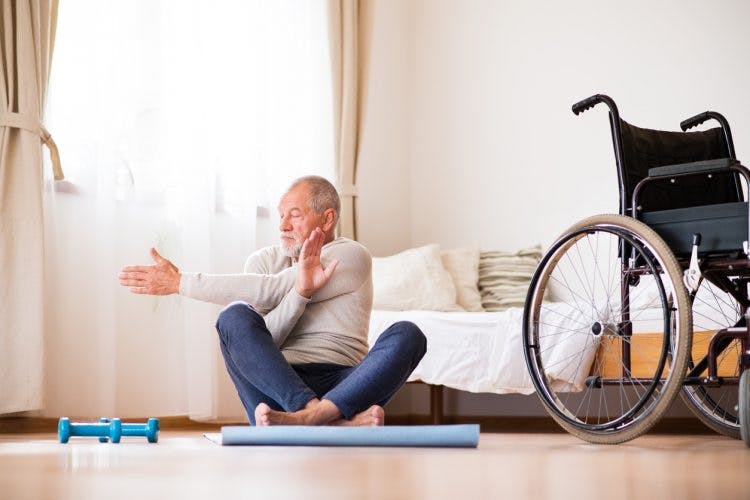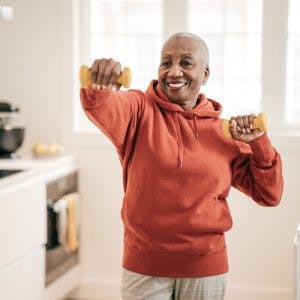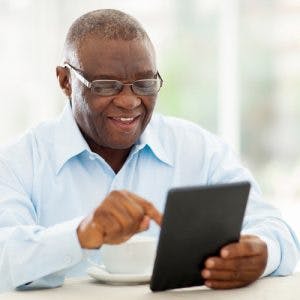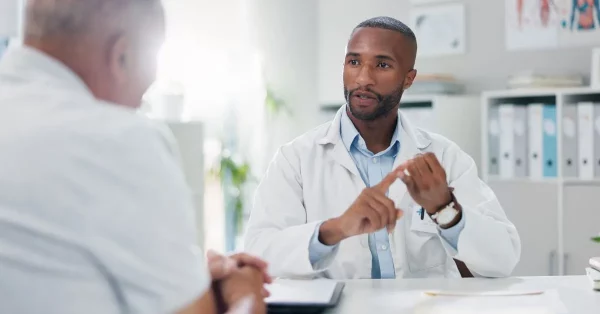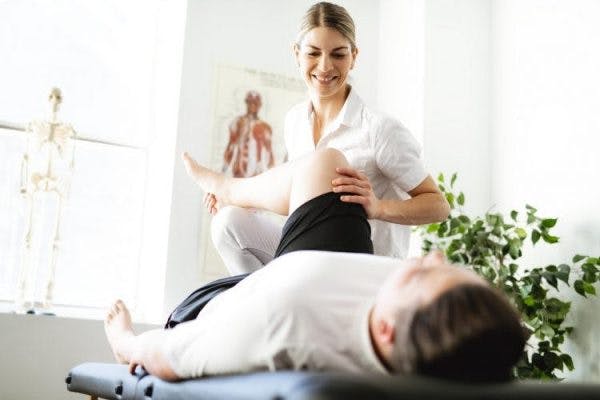There are many different ways to approach physical therapy for stroke patients at home. How do you know which methods are the best for you?
After a stroke, patients may feel overwhelmed by the changes in function and new daily life they experience. However, home therapy for stroke patients is crucial for maximizing recovery and returning to normal activities.
Every stroke is different, and every survivor will respond best to different at-home therapies. Therefore, experimentation is key. To help you get started, we will review some of the best methods and tips to help you with physical therapy at home after stroke.
Best Therapy Methods for Stroke Patients at Home
After discharge from outpatient therapy, it’s essential for stroke patients to continue a strong recovery program at home. The brain needs constant stimulation in order to continue healing and improve muscle function.
We will start by explaining the top 5 stroke recovery treatment options you can do at home. These methods focus specifically on mobility and strengthening. After that, you’ll learn more tips for home therapy after stroke to help maximize recovery.
1. Daily Stroke Rehabilitation Exercises
While generic exercise focuses on strengthening your muscles, stroke recovery exercise activates your brain to deliver messages to the muscles for movement. Rehabilitation focuses on activating neuroplasticity, the mechanism the brain uses to rewire itself and learn new skills.
After a portion of the brain has been affected by stroke, neuroplasticity develops new pathways to healthy areas of the brain. By practicing rehab exercises at home on a consistent and daily schedule, you feed the brain the stimulation it needs to rewire itself and improve function.
Depending on the area of the brain affected, stroke survivors often experience weakness or paralysis of one side of the body. This is known as hemiparesis or hemiplegia. This manifests as extreme weakness of an arm or leg or both, and can lead to significant muscle atrophy.
Thankfully, consistent performance of leg exercises or arm exercises as part of a home therapy regimen can help stroke patients boost their recovery. Strengthening the muscles is also a goal during stroke rehabilitation to help combat the muscle atrophy that has occurred from nonuse.
2. Mirror Therapy for Hand Recovery
Mirror therapy is one effective method to activate the signals from the hand to the brain, especially for those with hand paralysis or extremely limited hand movement. This technique can also help manage post-stroke pain and reduce hemineglect, or neglect of one side of the body after stroke.
This therapy method for stroke survivors involves using a tabletop mirror to cover the affected arm with the reflection of the functioning arm. Then, you perform tabletop hand therapy exercises while looking at the reflection.
Although you know you’re only moving one hand, mirror therapy tricks the brain into thinking you’re moving both hands. This helps activate neuroplasticity and slowly improve mobility in the affected hand.
3. CIMT for Arm or Leg Paralysis
Constraint-induced movement therapy (CIMT) is a challenging form of physical therapy that is helpful for stroke patients with hemiplegia or hemiparesis. It works by restricting movement of the unaffected side while forcing use of the affected side.
CIMT is most often a rehabilitation technique that is initiated in rehab and then continued at home. This technique can be challenging and, at times, frustrating since movements with the affected limb may feel clumsy or inefficient. However, this can be an excellent therapy method for patients to continue at home as they recover from hemiparesis or hemiplegia.
Want 25 pages of stroke recovery exercises in a PDF? Click here to download our free Stroke Rehab Exercise ebook now (link opens a pop up for uninterrupted reading)
4. Mental Practice to Improve Paralysis
Mental practice involves mentally rehearsing something before you actually do it. Professional athletes are known to implement mental practice to improve their sport, and stroke survivors can also benefit from this technique.
Try mentally practicing your rehab exercises for 5 minutes before you practice them in real life. Studies have shown that visualizing yourself moving helps activate neuroplasticity the same way that physically moving does.
Mental practice is especially helpful for patients who are affected by paralysis and cannot move without assistance yet. It provides a way to help the brain rewire itself without requiring movement. This technique can also be combined with passive rehab exercises where someone is moving your affected limb for you.
5. Home Rehabilitation Tools
At-home physical therapy tools can help you stay motivated during stroke recovery at home, especially if you’ve grown tired of following along with written sheets of exercises. Ask your therapists if they recommend any recovery tools to incorporate into your home therapy after stroke.
For example, many physical and occupational therapists highly recommend Flint Rehab’s FitMi home therapy for stroke survivors as a home exercise program. It motivates users to accomplish high repetition of standard rehab exercises, which helps promote recovery.
FitMi won awards from the American Occupational Therapy Association for “Best in Show.” Also, Bob & Brad (two physical therapists on YouTube with over 4 million subscribers) gave FitMi their stamp of approval.
See what these popular physical therapists said about FitMi in this video:
Tips to Boost Physical Therapy for Stroke Patients at Home
Now that we have reviewed the top home therapy treatments, it’s time to focus on additional healthy habits to maximize your recovery. Consistency is the key to recovery and knowing the best steps for physical therapy is much different than taking them.
When stroke patients are creating their home therapy regimen it is important to establish a routine that improves the chances of staying consistent. To help you with this, here are 10 more tips to implement your best physical therapy regimen at home:
6. Boost Your Mindset with Kaizen
Kaizen is the Japanese practice of continuous improvement through small, consistent steps. While this may sound too simple to work, the simplicity of this practice is actually the hardest part.
Kaizen involves patience and persistence, two essential ingredients for physical therapy after stroke. Recovery after stroke is a lengthy process and you can’t achieve your results all at once. The brain can only do so much in a single day.
The best thing you can do to achieve results is take it one step at a time, day after day. This slow yet steady pace is exactly what will lead to your highest recovery possible. Even if you do experience a stall in your progress, keep focusing on taking small steps toward recovery.
7. Stay Moving
Most physical therapists have one main goal for physical therapy for stroke patients at home: to keep moving. All movement is beneficial during stroke recovery, even if the movement feels slow or inefficient at first. Try your best to engage in therapeutic movement daily.
One determining factor of a successful recovery is how consistently stroke patients pursue rehabilitation long-term. One study found that after a stroke, patients were at the same level of recovery 5 years post-stroke as they were just 2 months post-stroke. The study linked a lack of long-term rehab as the cause for stagnation. This is why small, consistent steps taken long-term provide the best results.
Additionally, stroke patients often experience a decline in cardiovascular health following their stroke. Finding ways to engage in daily movement and aerobic exercise can help ward off further cardiovascular complications and may even improve neuroplasticity.
8. Turn the Background Noise OFF to Turn Your Brain ON
When attention is divided between physical therapy and the television playing in the background, you may not be reaping the full benefits of physical therapy at home after stroke.
Especially in the early stages of stroke recovery, survivors may notice they are more sensitive to sounds or distraction. As your brain is recovering from injury, excess sound may lead to auditory overload.
To help combat this, create a quiet, distraction-free environment to maintain your concentration for exercise. Turn off the television and tell family members not to disturb you during this time. Your brain is hard at work rewiring itself. Don’t let excess noise or distraction get in the way.
9. Don’t Let a Plateau Stop You
Every stroke is different so everyone will recover at a different pace. Many survivors experience periods where their stroke recovery seems to slow or even regress. In fact, there is a well-documented phenomenon called the stroke recovery plateau where results often slow down at the 3-month mark.
Setbacks like this are normal and to be expected during the recovery process. Don’t let it stop you from continuing with physical therapy at home after your stroke. Although results may take longer to occur, recovery will not stop unless you stop.
When you stick with a consistent home therapy regimen, the brain will respond and healing will continue. Creating a daily schedule for your exercises can help you stay on track. Additionally, you can ask a family member or friend to help you stay accountable.
10. Focus on Fueling Your Body
By now you know that physical therapy is a main focus for stroke patients at home. However, it is also important to think about how you are fueling your body as you stay consistent with your home exercises.
Proper hydration and a healthy diet play a huge role in recovery from any illness or injury, including stroke. Viewing your nutrition as an important adjunct to your home therapy after stroke is a crucial piece of the recovery puzzle. Optimal nutrition can lower your cardiovascular risk, which means lowering your risk of another stroke.
Maintaining a healthy diet during stroke recovery can also boost neuroplasticity by providing the nutrients your brain needs to make new neural connections. If you have difficulty swallowing after stroke, a speech therapist can help you with strategies and exercises to improve your ability to eat safely.
11. Treat the Root Cause of Spasticity
Stretching is great for spasticity, but this is not the only way to address this common secondary effect of stroke. In fact, accompanying your stretches with daily rehab exercise is even more beneficial.
Spasticity is the result of miscommunication between the brain and body. When the brain cannot send signals that tell the muscles when to move or relax, the muscles tighten up to protect themselves.
Stretching is helpful because it prevents contractures. However, this does not address the root cause of the spasticity. Rewiring the brain treats the root issue. Therefore, your daily at-home exercise helps improve mobility and reduce spasticity long-term.
Additionally, there are other treatments for spasticity after stroke such as splinting or bracing, electrical stimulation, and Botox. Talk to your doctor and rehab team about what treatments will be best for your specific needs.
12. Don’t Neglect Hand Rehabilitation
Hand function often takes longer to recover than arm or leg movement. As a result, many stroke survivors neglect hand therapy and instead find compensation strategies to use their non-affected hand for everyday tasks, like cooking one-handed.
However, when the affected hand is neglected, the loss of mobility only worsens. This phenomenon is called learned nonuse. The presence of spasticity can also greatly affect the hand, leading to a clenched hand and curled fingers after stroke.
To improve hand function after stroke, patients must keep the hand active. Focus on using the affected hand during daily tasks, even if the stronger hand assists with the movement. Most importantly, be sure to complete daily hand therapy exercises to help rewire the brain to improve the likelihood of regaining hand function.
13. Get More than 6 Hours of Sleep
Sleep plays a crucial role during stroke recovery, especially when it comes to physical therapy. This is because REM sleep has been shown to help people learn and remember how to perform physical tasks.
During REM sleep, the brain has an opportunity to replenish the neurotransmitters that organize neural networks for remembering, learning, and performance. Therefore, it’s important for stroke survivors to get ample rest and to practice good sleep habits. This can help combat the excessive sleepiness after stroke that many survivors experience.
REM sleep (rapid eye movement sleep) usually occurs towards the end of the night, so it’s important to allow yourself to sleep longer than 6 hours each night. If you sleep more than 30 minutes at a time during the day, this might interrupt your nighttime deep sleep. When your mind and body are at rest, healing can occur.
Sleep disorders are common after stroke and can be a roadblock during recovery. If you have any sleep disorders that prevent you from sleeping longer than 6 hours, talk to your doctor to discuss your options.
Why Home Physical Therapy Matters for Stroke Patients
The recovery journey after stroke is a marathon, not a sprint. For this reason, it is vital for stroke patients to perform home therapy on a consistent basis. The brain needs constant reinforcement in order to lay new pathways and regain lost functions.
As we’ve discussed in this article, exercise is not the only important aspect of a recovery regimen. Setting small goals, addressing spasticity, and maintaining good sleep and nutrition can help boost your recovery from stroke.
If you can, work with your therapist to create your home physical therapy regimen that is specific to your stroke and your own personal needs. Your therapist understands your unique condition and can help create motivating, meaningful goals with you.
We hope you’re inspired to be consistent with your home therapy after stroke and to continue pursuing it for the long-haul. This will lead to the best results and can help get you back to the activities you love.

